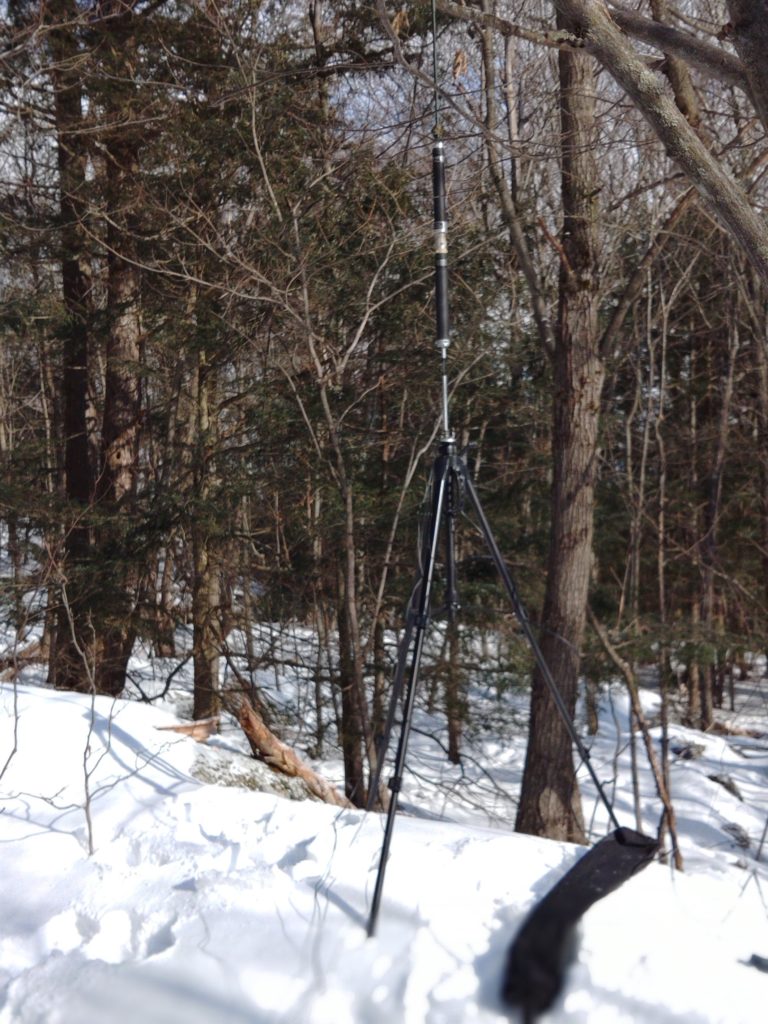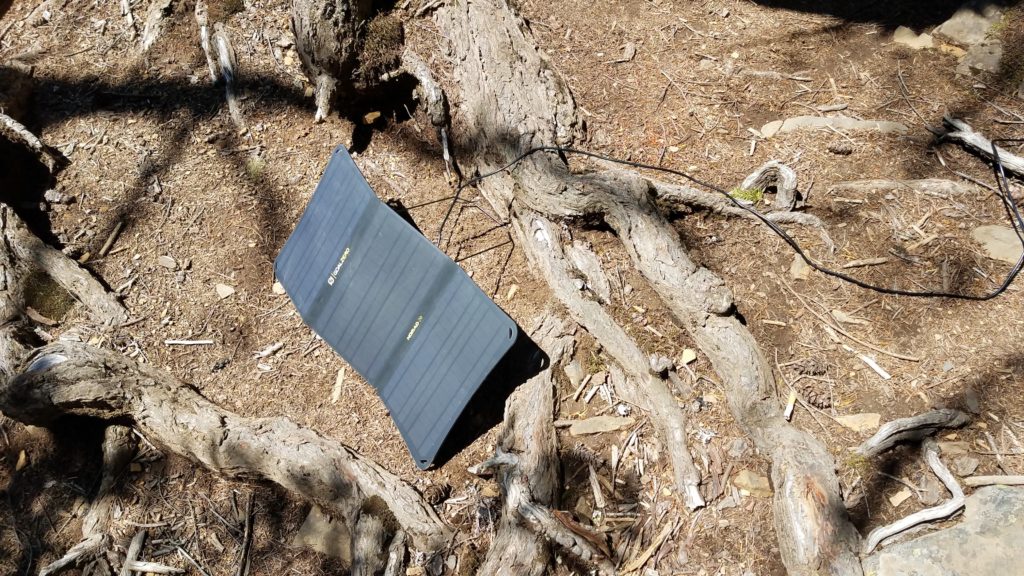Howdy! This post is one that’s been in the drafts list for a hot minute, but I took a trip to NE VT to visit a partner and on valentine’s day we went out in the woods behind her place to radio for a couple hours. After a hike that seemed much longer up hill than down we arrived a higher spot with a clearing that would allow me to set the Superantenna up. I wanted to test my new Yaesu VX-6R with a Mobilinkd TNC3+ for APRS operation. I was hoping to make some contacts with Canadian stations since I was less than 1.5 miles from the border on the hike, but alas I don’t have something set up right.
To add a bit of fun the shoulder strap on the Superantenna bag failed as seen in the photo below as we hiked up. Unfortunately that meant we had to hand carry the unit up and back down.


After getting the setup ready to rock I tried some phone operations on 20m SSB, but was ultimately not able to make any contacts despite being able to hear a number of other stations. There was a contest going on so it was hard to reach other stations. I haven’t been having a lot of luck with the Superantenna lately apart from using for SWL. I kept the 4.5AH Bioenno battery wrapped in a warm shirt within my black Chrome bag to keep it as warm as possible rather than leaving it in the ammo can. I just ran the power cable out of the top of my bag and left it rolled up when we found the spot to set up. The only ill effect the cold seemed to have on the TX-500 was that the LCD screen was a touch slow to respond to changes, but I was able to tune to stations without issues. I was surprised not to see a bunch of frequency drift despite the weather.

I used the VX-6R with the Mobinlind TNC3+ in conjuction with a duplexer going to the Superantenna with a 2m load coil set up.

Superantenna and Chameleon Mil Whip 2 set up for 20m and 2m operation
In conclusion I made no contacts whatsoever and it was cold as hell, but it was a fun hike/bushwack and my winter gear held up very well against the cold. I’d like to try this again someday, but with the trail friendly 10/20/40m endfed. I also have more experimentation left to go to get my Mobilinkd TNC3+ working properly to do APRS. As a note it wasn’t nearly as difficult to deal with the Superantenna ground plane wires as I thought it might be. The main problem I had was that I’d wound them in a way that allowed them to get tangled up and deploying them was difficult. Rolling them back up wasn’t too difficult even when the sun was behind cloud cover.











